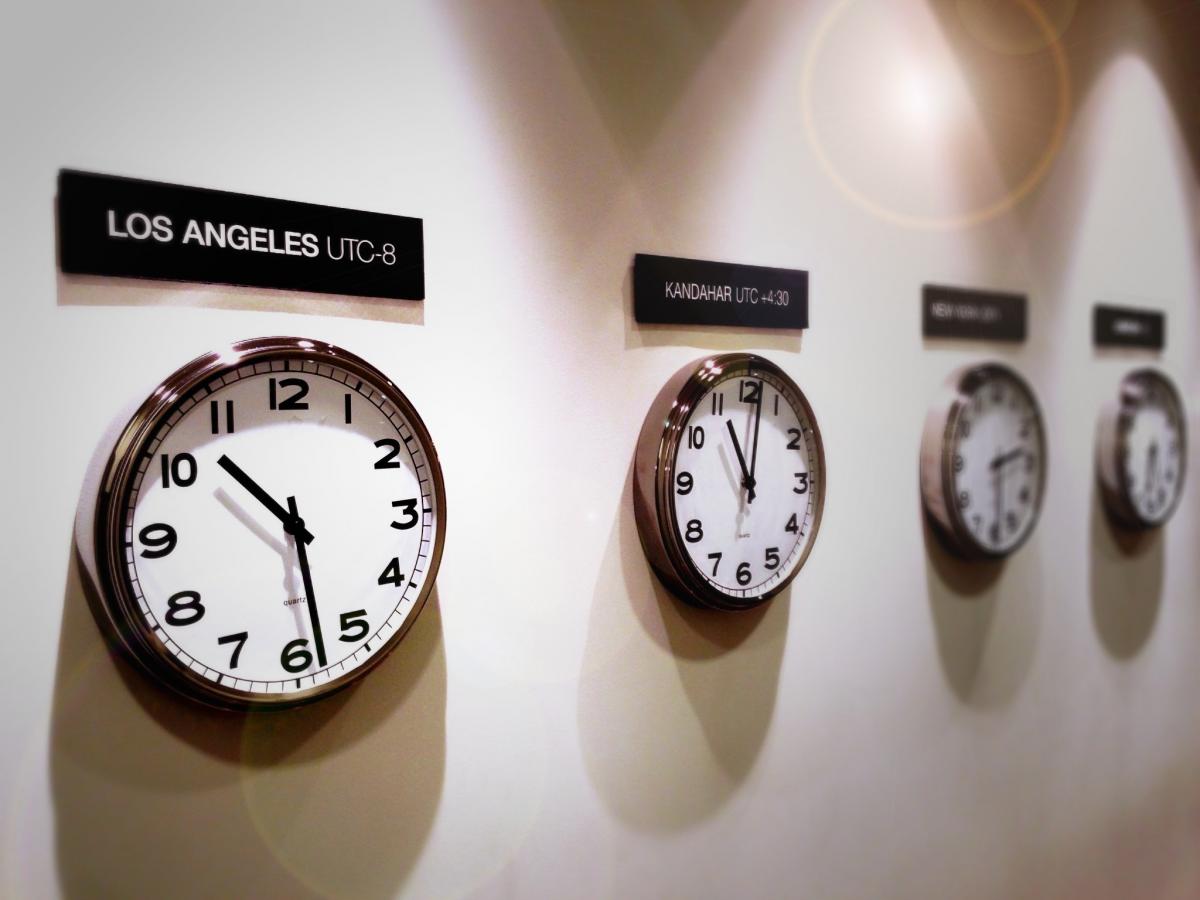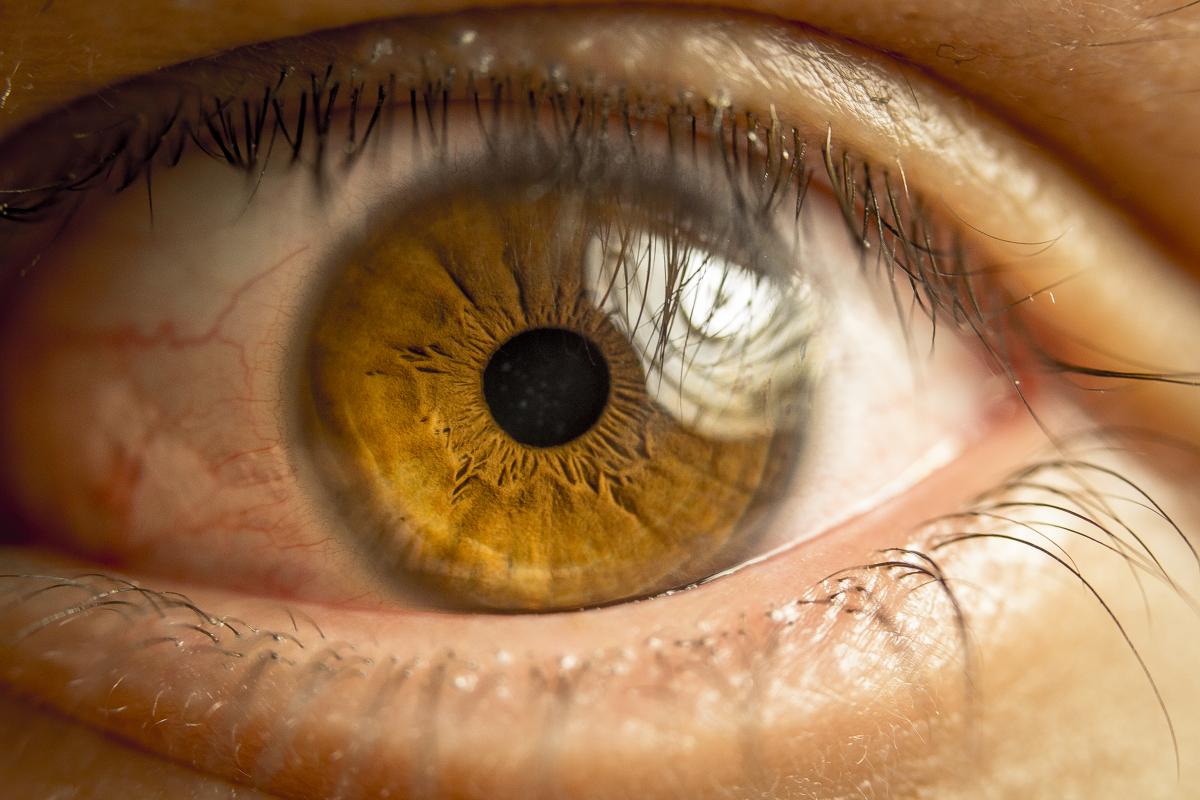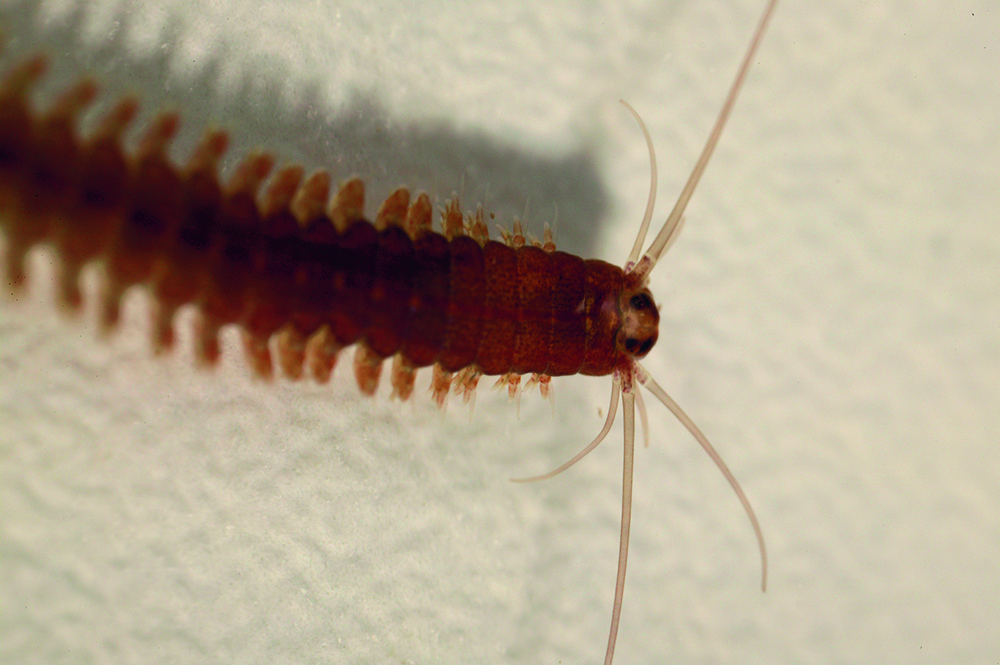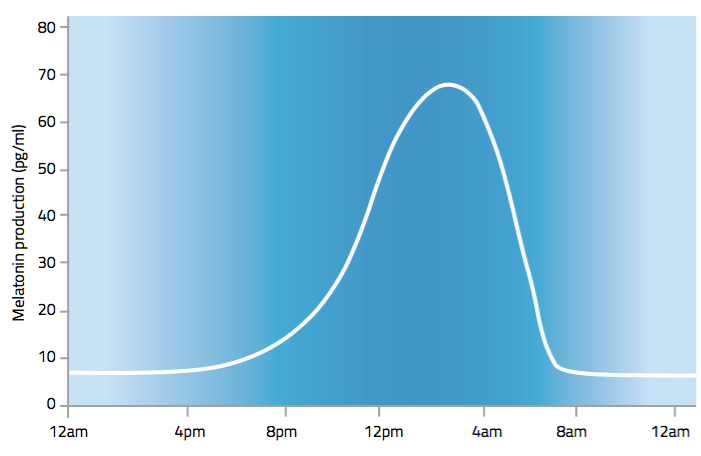How plankton gets jet-lagged Understand article
One of the world’s largest migrations is probably driven by a hormone that governs our sleep patterns.

time zones disrupts our
body’s rhythm resulting in
jet-lag.
Image courtesy of Slack12;
image source: Flickr
Melatonin is an essential hormone for maintaining daily rhythm and sleep in humans. Scientists at the European Molecular Biology Laboratory (EMBL) in Heidelberg, Germany, have now discovered that it also governs the nightly migration of a plankton species from the surface to deeper waters (Tosches et al 2016).
In vertebrates, melatonin has key roles in controlling the body’s activity patterns and in ensuring it has a regular rhythm across the alternating of day and night over 24 hours. When we fly across time zones and this alternation is disrupted, our usual patterns slip out of sync and we feel jet-lagged.
Virtually all animals have melatonin, and it plays a similar role in all species, including some micro-organisms that scientists think are similar to our very distant ancestors. Understanding the role of melatonin in these primitive organisms may hold some clues to how our nervous system evolved.
Circadian rhythm
Have you ever heard about the ‘circadian rhythm’? The word ‘circadian’ comes from Latin: circa means nearly, and dien means day – so, nearly one day. It refers to the regular 24-hour cycle that most of the functions in our bodies (such as body temperature, blood pressure and hormonal production) follow. Having a regular and balanced circadian rhythm is very important, because its disruption can cause health problems that range from inconvenient, like jet-lag, to very serious, like depression.
How humans get in sync
Although similar mechanisms exist in other species, humans are actually one of the most studied animals when it comes to understanding circadian rhythm. The circadian rhythm depends only on light and is mostly controlled via the eyes. The human retina not only is useful for us to consciously see things, but also plays a role as a light sensor, allowing us to adapt our body’s functions to the quantity of light in our environment. It contains a small percentage (approximately 1 %) of very specific photoreceptors called intrinsically photosensitive retinal ganglion cells (ipRGCs), which are directly linked to the central body clock in the brain and produce a molecule called melanopsin.

are linked to the central body
clock in the brain.
Image courtesy of Roman
Miramontes; image source:
Flickr
The ipRGCs sense only the intensity of the light: they are activated and produce melanopsin when there is a lot of light, more specifically blue light, and they stop their production at night, when the intensity of light is lower. Melanopsin is released directly into the central body clock of the brain, situated just above where the two optical nerves cross – its scientific name is the suprachiasmatic nucleus (SCN), the nucleus above the crossing.
Via a cascade of reactions, melanopsin inhibits the production of melatonin in the pineal gland, another region of the brain. As a consequence, melatonin is only produced during dark hours – at night. Melatonin plays a major role in almost all of the body’s functionsw1, such as sleep pattern or temperature; body temperature drops by approximately 1 °C from day to night.
To ensure that all functions are performed properly, every day, regardless of the weather, the body doesn’t only adapt to the intensity of the light it currently sees, but also to its recent history of light exposure. In a way that is not yet fully understood, melanopsin keeps a memory of recent exposure. When this pattern of exposure changes, for example during travel over several time-zones, its rhythm is disrupted and it takes several days to go back in sync, causing jet-lag.
Planktonic migration
Melatonin is also present in other species, even microscopic ones that don’t have as many different functions as humans: what is its role for them? To find out, Detlev Arendt and his colleagues at EMBL turned to the marine ragworm Platynereis dumerilii, a tiny creature that is thought to be very similar to the first animals with a brain and nervous system that appeared on Earth.

Image courtesy of EMBL/Detlev
Arendt
This worm’s larvae take part in what has been described as the planet’s biggest migration in terms of biomass: the daily vertical movement of plankton in the ocean. By beating a set of microscopic ‘flippers’ – cilia – arranged in a belt around its midline, the worm larvae are able to migrate toward the sea’s surface every day. They reach the surface at dusk, and then throughout the night they settle back down to deeper waters, where they are sheltered from damaging UV rays at the height of day.
“We found that a group of multitasking cells in the brains of these larvae both sense light and run an internal clock that makes melatonin at night,” says Detlev. “So we think that melatonin is the message these cells produce at night to regulate the activity of other neurons that ultimately drive day–night rhythmic behaviour.”
Maria Antonietta Tosches, a postdoctoral researcher in Arendt’s lab, discovered a group of specialised motor neurons that respond to melatonin. Using modern molecular sensors, she was able to visualise the activity of these neurons in the larva’s brain, and found that it changes radically from day to night. The night-time production of melatonin drives changes in these neurons’ activity, which in turn cause the larva’s cilia to take long pauses from beating. Thanks to these extended pauses, the larva slowly sinks down. During the day, no melatonin is produced, the cilia pause less, and the larva swims upwards. “When we exposed the larvae to melatonin during the day, they switched towards night-time behaviour,” says Tosches. “It’s as if they were jet-lagged.”

Image courtesy of EMBL/MA Tosches
From Platynereis to the human brain
Research strongly suggests that the light-sensing, melatonin-producing cells at the heart of this larva’s nightly migration have evolutionary relatives in the human brain. This implies that the cells that control our rhythms of sleep and wakefulness may have first evolved in the ocean, hundreds of millions of years ago, in response to pressure to move away from the Sun.
“Step by step, we can elucidate the evolutionary origin of key functions of our brain. The fascinating picture emerges that human biology finds its roots in some deeply conserved, fundamental aspects of ocean ecology that dominated life on Earth since ancient evolutionary times,” Detlev concludes.
References
- Tosches MA, Bucher D, Vopalensky P, Arendt D (2014) Melatonin signaling controls circadian swimming behavior in marine zooplankton. Cell 159: 46–57. doi: 10.1016/j.cell.2014.07.042
Web References
- w1 – Some of the main roles of melatonin in the body are explained in this article from Medical News Today: www.medicalnewstoday.com/articles/232138.php
Resources
- This article is based on a full report of the Arendt group’s discovery on the EMBL website, which you can read at: Furtado Neves S (2014) How plankton gets jet lagged. 25 Sep, http://news.embl.de/science/1409_plankton-jetlag/
- Read an open-access comic book on sleep and the circadian clock: Weinzaepflen, C, Spitschan, M (2021). Enlighten your clock: How your body tells time. (C. Weinzaepflen, Illus.). DOI: 10.17605/OSF.IO/ZQXVH
Institutions
Review
Every student changes their sleeping pattern as they grow up. They have to navigate schedule requirements, sometimes against their circadian rhythm. This article invites students to understand the basics of their own best performance time. Comprehending the biological facts behind circadian rhythms makes it easier to change patterns and gives students a feeling of empowerment. This topic may have a life-changing impact on their future.
The article could be used to do the following exercises in class:
- Melatonin as a ‘cure’ for jet lag: explain under what circumstances this makes sense (while travelling west or east), taking the time of the day into account.
- Draw a graph relating day / night to melanopsin / melatonin expression in the brain.
- Use the internet to define the light-sensitive areas on the human body.
Friedlinde Krotscheck, Austria





